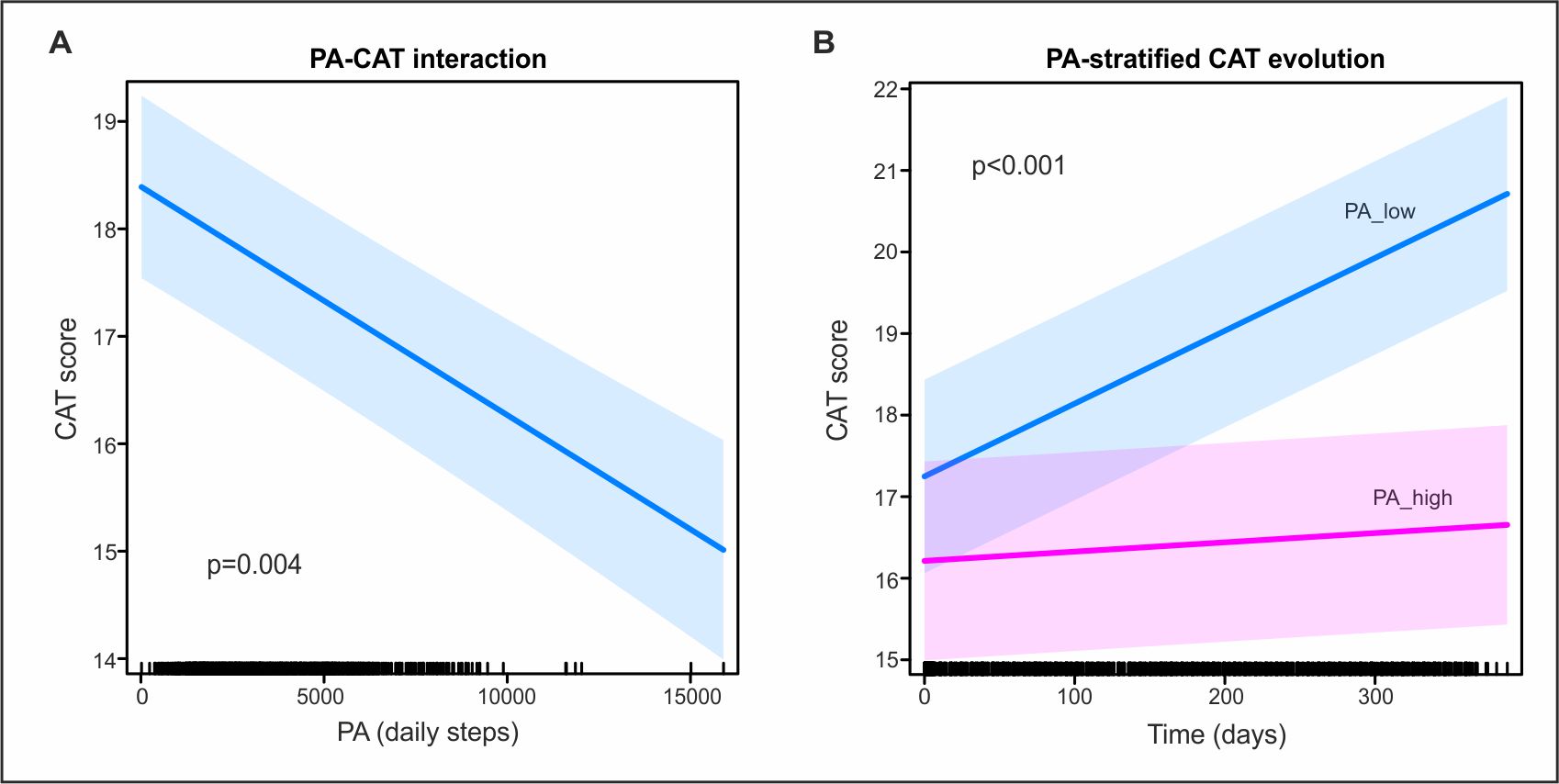Abstract
Background
Physical activity (PA) is recommended for COPD patients but how PA affects the evolution of the COPD assessment test (CAT) score has remained elusive.
Aims and objectives
We set out to quantify PA levels in COPD patients and investigate the association with CAT score. It was a key study goal to find out whether increased PA correlates with improvements in CAT score.
Methods
We here conducted a monocentric, prospective, observational, exploratory, cohort study of 42 patients with COPD group B or higher (NCT03855670). Patients were monitored over 1 year using an activity-tracking wearable and provided weekly CAT scores using a telehealth platform accessible to the study investigators. Complementary readouts were performed during semi-annual study visits.
Results
Longitudinal activity tracking under real-world conditions showed a high degree of interpatient variation and disclosed individual PA trajectories. Correlation analysis demonstrated a significant inverse association of PA with CAT score evolution (figure 1, panel A). This finding was further corroborated using CAT score analysis in PA-stratified patients (figure 1, panel B).
Conclusions
Increased PA levels are associated with lower CAT scores and predict slower CAT score progression. Future work should involve training intervention to establish a causal relationship and quantify effect sizes.
Figure 1
Inverse association of PA with CAT score evolution.
